Helping people with disabilities to regain control over their limbs, provide increased mobility for the elderly or augment capabilities of workers performing heavy labor, these are only a few examples where exoskeleton suits can provide significant benefits for our health and safety.
The idea behind exoskeletons can be traced back to 1890 when Nicholas Yagn created the first suit of this type, actuating the various components with energy stored in gas bags. This device was used by the Russian engineer to walk, jump and run in a form similar to suits nowadays. The modern version of today’s exoskeletons was designed and built in the 1960s by General Electric and the United States Military. The suit was powered by hydraulic systems and electricity with a maximum loading weight of 110 kg (250 lbs). Named Hardiman, the exoskeleton had a weight rate of 1 to 11 – an user which lifts 11 kg feels the weight of 1 kg.
Since then, when exoframes were designed to be used solely in military applications, the technology went through a lot of improvement so latest projects have a futuristic design, are comfortable to wear and can sense even the tiniest body movements. With few exceptions exoskeleton suits and devices featured in this article are in use in various medical and research institutions, some models being even available for consumers. Let’s take a look.
Cyberdyne HAL
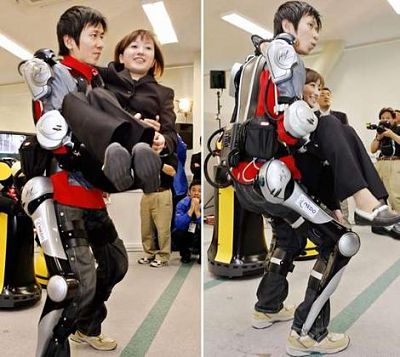
HAL is a family of products for both medical and non-medical use developed by Japanese company Cyberdyne. The project started in 1992 with commercial versions surfacing in 2012.
The HAL medical lower limb exoskeleton is an important asset in recovery therapy for people with lower body injuries and are used in medical facilities under supervision. Cyberdyne also offers such services. The non-medical version is designed to assist mobility in everyday routine for users.
Other non-medical exoskeletons provide assistance or relief for single arm or knee joints or in the lumbar area. There is also a lumbar support device aimed at workers performing heavy labor. There are also full body exoskeletons for augmenting normal body capabilities or for disaster recovery, however these are still in development.
ReWalk
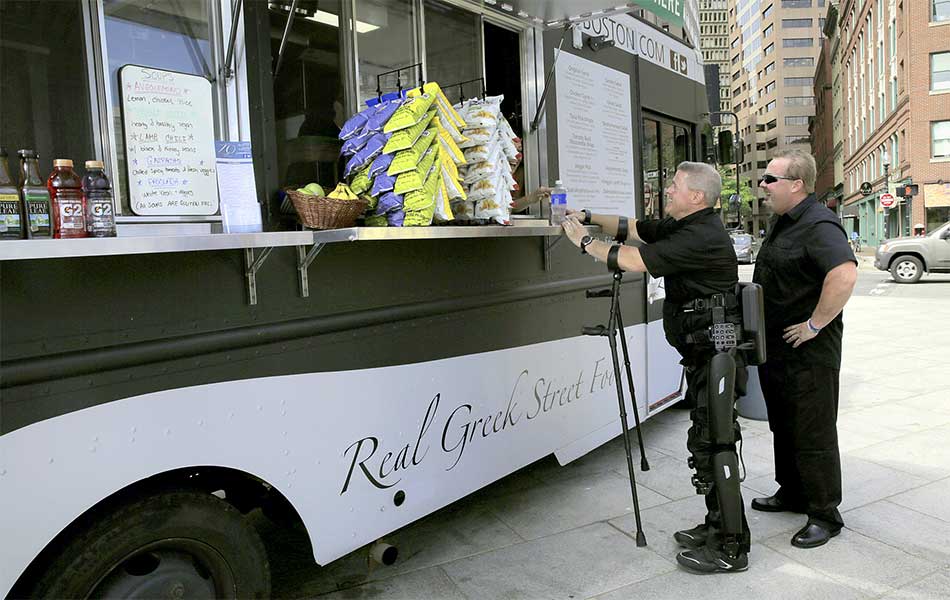
The ReWalk range of products is designed for personal use by people with disabilities and gives the liberty for any user to walk, sit, or allows turning. ReWalk 6.0 can be used at home or work the entire day thanks to a powerful battery which provides energy for entire day. The exosuit reads the changes in center of gravity and upper-body movements then sends corresponding signals to actuators. The cost for a single suit is about US$ 77,000.
suitX Phoenix
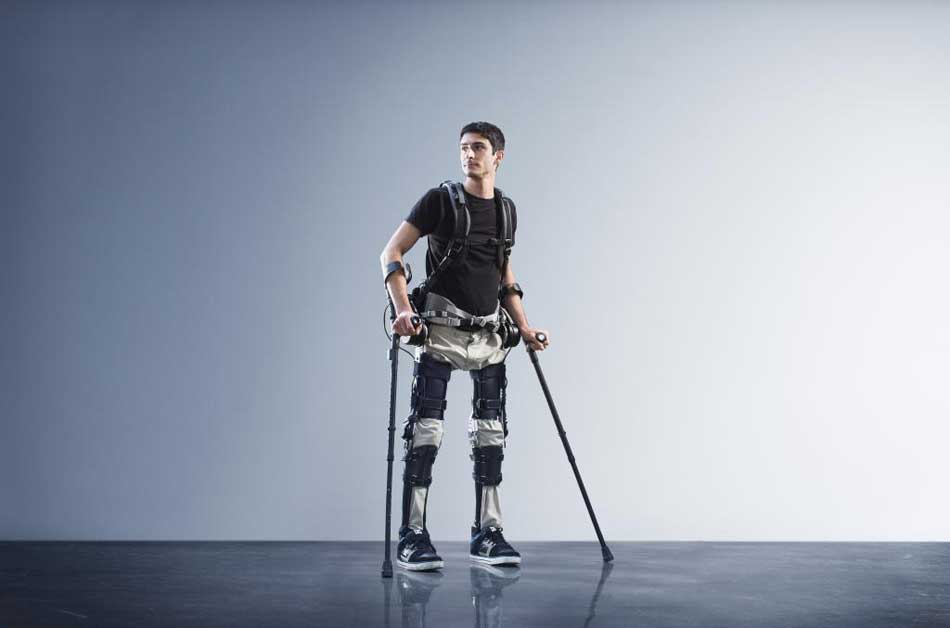
The Phoenix exoskeleton has been developed by suitX also known as US Bionics, another spin-off from the University of California at Berkeley. The product is aimed at helping people with lower body mobility disorders recover their abilities. Phoenix is adjustable and lightweight, tipping the scale at approximately 12kg (27 lbs). The battery provides between 4 and 8 hours of operation time on a single charge.
The exoskeleton is also modular, allowing users to mount and remove parts without external help. It consists of a hip module, two knee and two feet modules. It has been announced in February 2016 at a price of US$ 44,000.
Honda Walking Assist
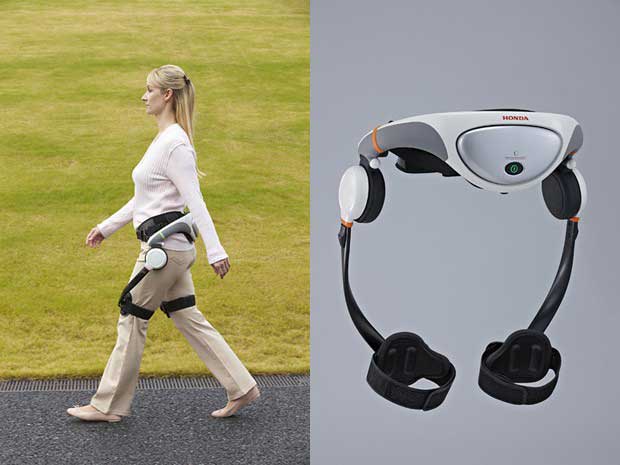
Presented for the first time in 2010 at the Why Design Now? exhibition, Honda Walking Assist is a concept turned reality. Benefiting from extensive research performed for the Asimo robot, the Walking Assist suit is extremely compact, lightweight and even stylish it is designed to provide extra support to the lower body during a user’s daily routine. It can also be a great asset for people who need to stand during prolonged periods of time or for providing ease in movements of elderly people.
The suit weighs only 2.7kg with all the bulk being located around the waist. The Li-ion battery delivers about 60 minutes of operation on a single charge. Honda announced in July 2015 that it plans to start leasing these suits in Japan for a monthly payment of about 45,000 Yen (US$ 375, 345 EUR) on a 36-month plan.
Ekso

Ekso was developed by Ekso Bionics, formerly known as Berkeley Bionics – a spin-off from the University of California, and is designed to increase mobility options for people with disabilities. The project started in 2010 under the name of eLEGS, the suit is designed for gait training for people with various degrees of paralysis. It is available in medical centers where certified therapists supervise recovery of patients. The battery provides power for at least six hours of use. Using carbon fiber and steel to build the frame, total weight of the exosuit is 20 kg (45 lbs) including the batteries. An Ekso suit can cost approximately US$ 100,000.
Parker Indego
Indego is another lower-body exoskeleton designed for medical use, aiding people in recovery from their injuries or in helping with their mobility. First prototype was presented in 2010 at the Vanderbilt University in Tennessee, USA. Thanks to advanced materials used in its fabrication the suit is lightweight and can even be handled users on their own. To be flexible and to offer rigid lower back support all electrical motors are controlled by a powerful computer and are supplied with energy from a battery located around the waist. The Indego suit is currently used in various hospitals and rehabilitation centers.
REX
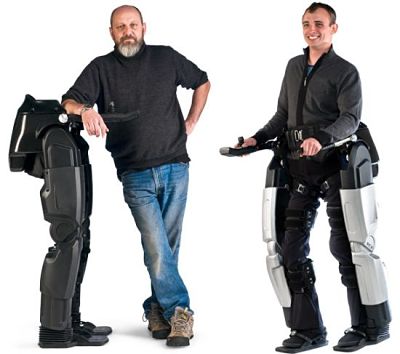
REX exoskeletons are developed by REX Robotics company from New Zealand. These exoskeletons are completely self supporting meaning that the user walks into the suit, rather than mounting the suit to the user’s limbs. The REX exoskeleton is used for therapy in medical centers, while the REX P is the home use variant designed as a replacement for wheelchairs, however this version is not for sale in the US.
HULC
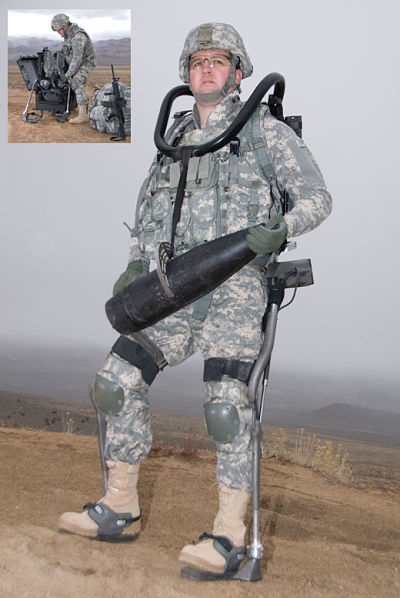
The Human Universal Load Carrier (HULC) exoskeleton suit project was developed by Berkeley Bionics in collaboration with Lockheed Martin and is designed to be used in military missions. The last version of the suit comes with an extended working time of over 72 hours. Used by soldiers on rough terrain, this exoframe was designed to be used for climbing and also to carry backpacks with equipment. Maximum weight supported by the suit is 90 Kg (200 pounds) and the user can run at 11 Km/h for a long period or could run at a speed of 16 Km/h (10 mph) for short periods.
The 72+ operational hours require extra battery packs which will be carried by soldiers. The new batteries was developed by Protonex, a company with substantial results in manufacturing batteries from 100 to 1000 Watt range. These new batteries are light-weight and have a high performance compared with old batteries used to power the suit.
Connected to the soldier body, the exoskeleton senses the user body and acts in accordance with its movements. In the same time the suit ensures a high flexibility and a minimal effort for the user body to lift weights.
Activelink Dual Arm Power Amplification Robot
This one is a robotic exoskeleton built for industrial environments to provide workers extra strength. Designed by Japanese company Activelink the exoframe provides force feedback and can lift up to 100 Kg (220 lbs). To lift weights 18 electric motors are used and two robotic arms with grippers attached to the ends. Still in prototype stage, the frame is build from aluminum-alloy and weight around 227 Kg (500 lbs). It is unclear whether it is still being developed or in production.
This is my lineup so far, this article is continously updated, please let me know if you find any mistakes or maybe point out a product that I might have missed.



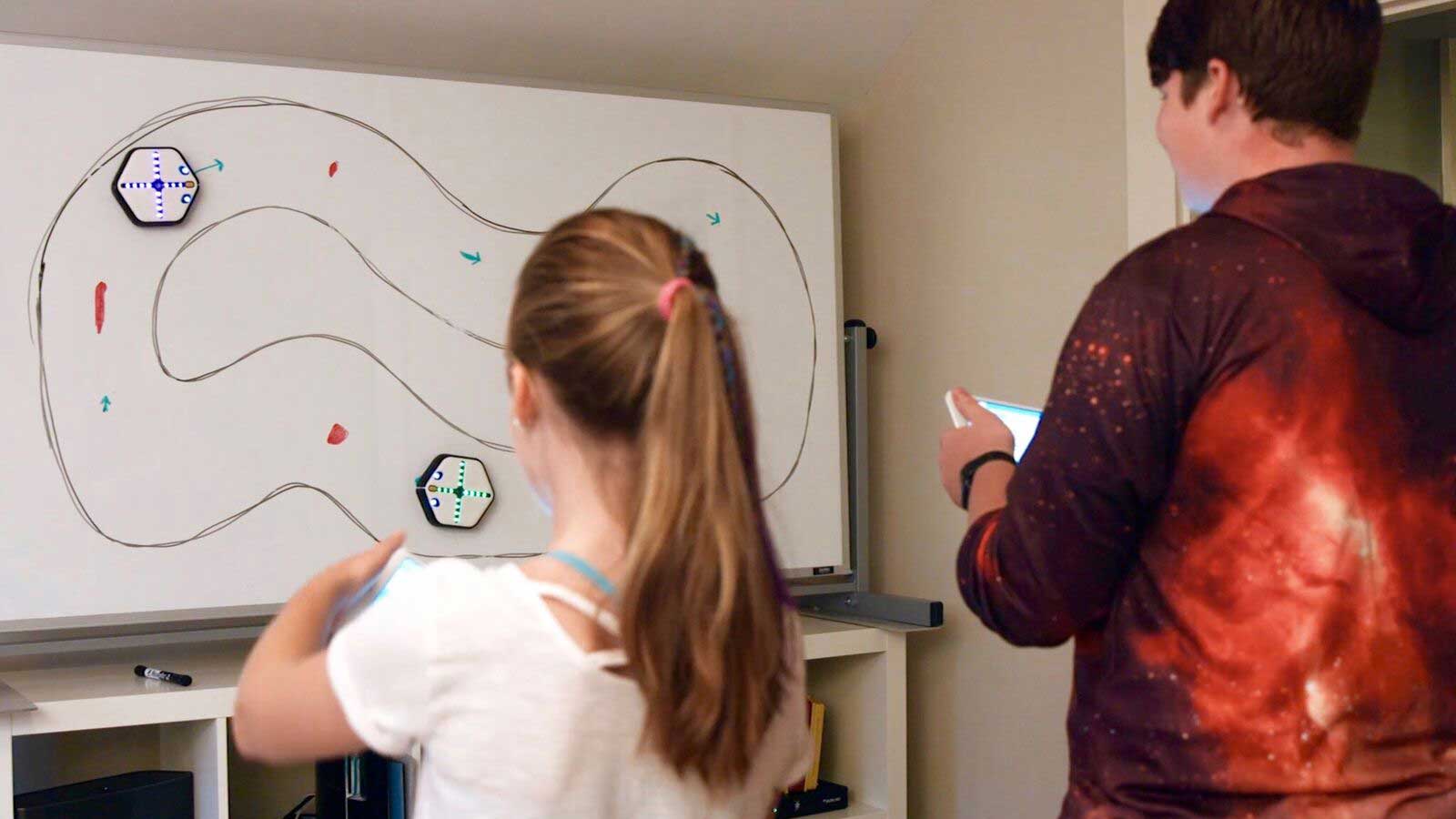
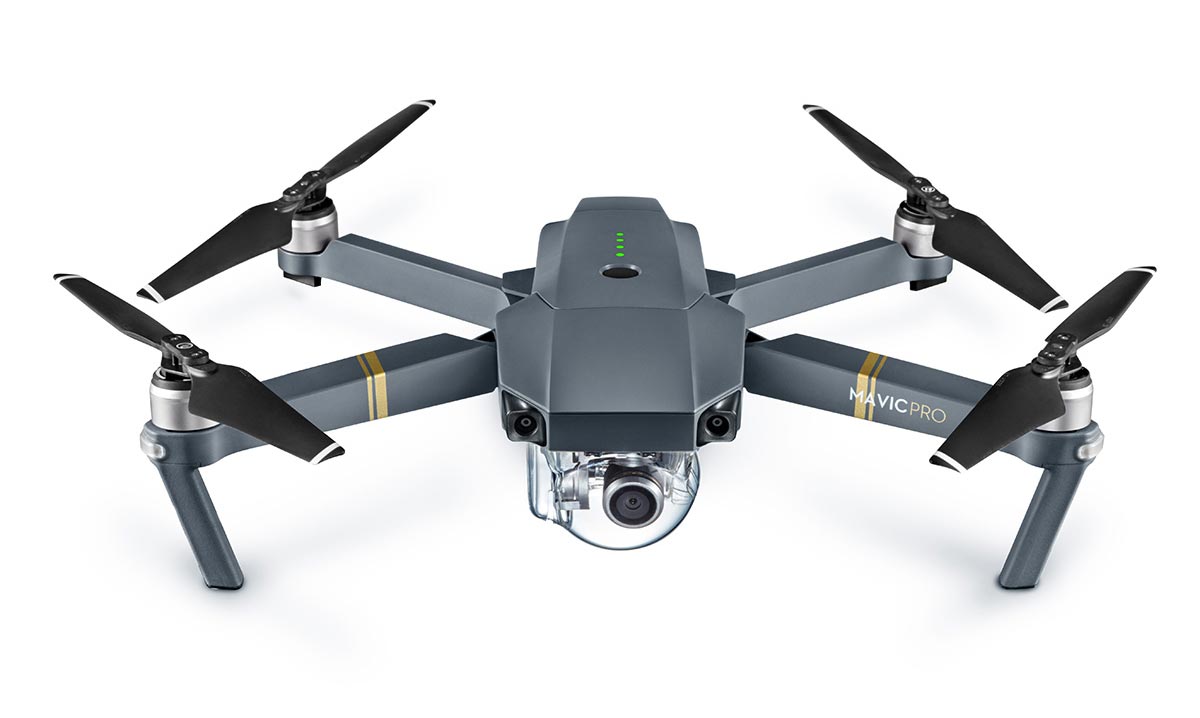
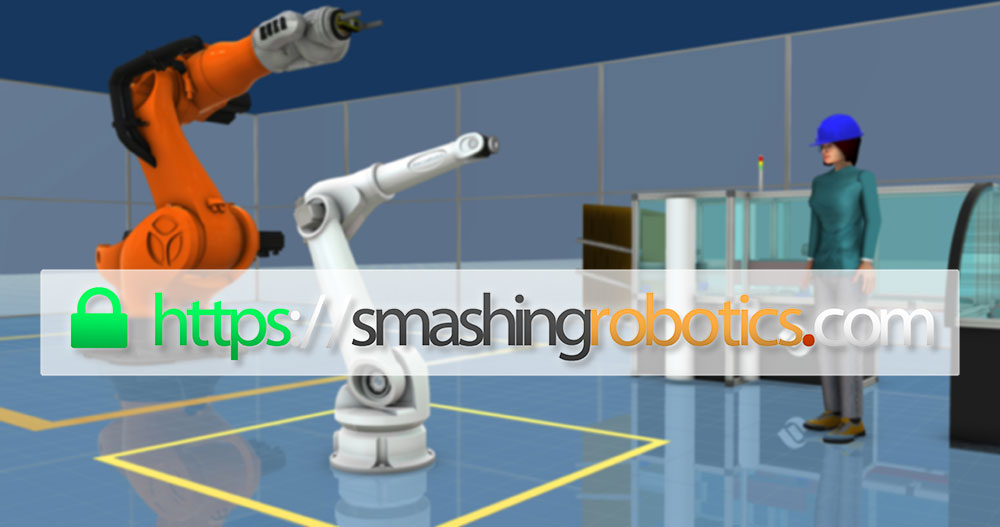


The HAL exoskeleton has amazed me.
Hi.
could you tell me how I can buy someone for spinal disability?
Please check the manufacturer website for more information.